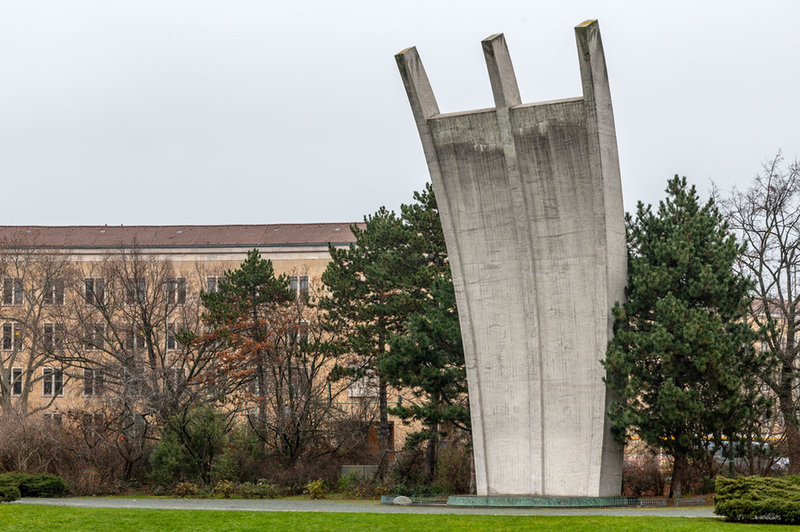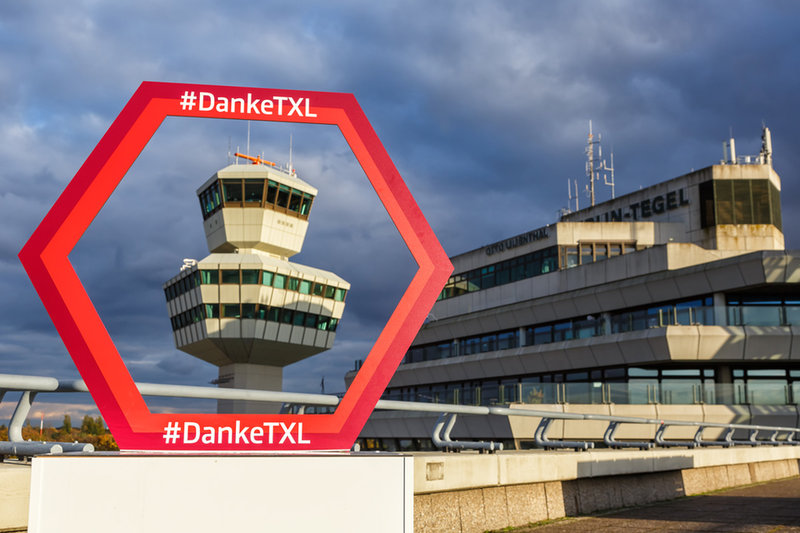AIRPORT PROFILE
Tegel Airport: saying goodbye to a legendary German hub
A week after the opening of Berlin Brandenburg Airport, Berliners said a tearful goodbye to Tegel Airport. Ilaria Grasso Macola profiles the history of this iconic hub and looks at plans to incorporate it into a new residential area.
Image: copyright
As the last flight from Berlin’s Tegel Airport took off at 3pm on 8 November 2020, Berliners said goodbye to a remnant of their city’s history.
The airport shut down operations after 72 years to make room for the new Berlin Brandenburg International Airport, which finally opened its doors on 31 October 2020 after a nine-year delay.
Despite feeling relief about the new airport opening, many were sad to say goodbye to the legendary hub, posting thousands of ‘thank you’ messages on social media with the #GoodbyeTegel and #DankeTegel hashtags.
This outpouring of gratitude is inextricably tied to what the city has gone through in the last 80 years, from WWII and the Cold War to the demolition of the Berlin Wall and the reunification of Germany.
With plans underway to turn the airport into a business and residential area, what does the future look like for Tegel?
Berlin Tegel: the early years
Even though Tegel Airport was built in 1948, its history goes back a century. Initially used in the 1800s as an artillery firing range by the military, in 1896 the area saw the construction of barracks for an airship battalion, as well as experiments on dirigible designs.
Ten years later, the first airship hangar was built on Tegel’s grounds and in 1914 the area became a military training ground used by aerial reconnaissance crews.
Aviation works at Tegel came to a halt with Germany’s defeat in WWI. As a result of the Treaty of Versailles – signed in 1919 between the Allies and Germany – the country was stripped of almost all its military capabilities and forbidden from having an armed air force, which led to the demolition of the 1906 hangar.
In 1930, the area was turned into a rocket testing site. Nine years later – on the verge of WWII – it became an air force military training ground.

A monument to the Berlin Blockade airlift in Tempelhof, Germany. Credit: bildobjektiv / Shutterstock.com
From the Berlin Blockade to the glory days
Berlin Tegel opened at the beginning of the Cold War under the extremely difficult circumstances of the 1948 Berlin Blockade.
Alarmed by the economic and social policies implemented by the US in post-war Europe, Joseph Stalin’s Soviet Union blocked all land access to West Berlin in June 1948, cutting access to primary good for 2.5 million civilians.
To grant access to vital supplies, western powers carried out an 11-month airlift, delivering vital necessities to the residents of West Berlin. In this climate, French-occupied forces built Tegel Airport in 90 days, with the first plane landing on 5 November 1948. After the blockade, the airport became a military base for the French air force.
A decade later, Tegel opened its door to commercial aviation and in the years to follow emerged as West Berlin’s most popular airport. In 1960, Air France launched its first regular commercial service to the airport, which was quickly followed by PanAm in 1964.
To me and many other West Berliners, Tegel really was a place apart
In 1968, Tempelhof Airport – at that time West Berlin’s most important airport – reached its maximum capacity, leading airlines to move their services to Tegel. In 1975, Tegel became the centre for PanAm and British Airways’ Berlin operations, replacing Tempelhof as the city’s main airport.
As Tegel was being used as both a civilian and military airport, passengers were flying to and from a prefabricated terminal. However, in 1974, a new terminal opened. Designed in a brutalist architectural style, the hexagonal terminal building became famous for its proximity to the runway.
“To me and many other West Berliners, Tegel really was a place apart," West Berlin resident Drahomira Bukowiecki told CNN. “It symbolised the glamorous world of air travel with its shops that sold wonderful things and the whole process of taking a flight which was very different in the 1970s.”
Bukowiecki – who fled Czechoslovakia in 1968 – was one of the millions of West Berlin residents for whom Tegel represented the only way out to western Europe and freedom.
“So, for me and my generation Tegel is the true Berlin airport, a part of us and the one place that enabled us to fly to freedom,” she added.
Germany’s reunification and 21st century problems
With the 1990 reunification of Germany and the federal government moving back to Berlin, West Berlin’s air traffic restrictions – which excluded airlines not headquartered in the US, UK or France from landing – were lifted, allowing German airlines to fly to Tegel.
In the 30 years since Germany’s unification, traffic at Tegel grew out of proportion, with passenger numbers reaching 24 million in 2019. As a result, the airport started to become more and more outdated, despite important renovation works carried out in 2007.
The Berlin Brandenburg project aimed to replace Tegel but delays kept the airport in operation until November 2020.

Berlin Tegel in October 2020. Credit: Markus Mainka / Shutterstock.com
Berlin TXL and the city of tomorrow
According to Tegel Projekt GmbH CEO Philipp Bouteiller, consideration for the future use of the Tegel site around 2008, four years before the company drew up the masterplan for Berlin TXL.
The basis for the 500-hectare project was a desire to create a prototype for ‘the city of tomorrow’ that could foster research and the development of solutions to issues such as climate change and digitalisation.
Scheduled for completion in 2041, the project revolves around two main areas: the Schumacher quartier and the Urban Tech Republic.
A residential district, the Schumacher quartier will see the construction of 5,000 smart and sustainable apartments for more than 10,000 people. According to Pouteiller, the district will also draw a diverse clientele due to its affordability.
The belief in a better future is anchored in the DNA of this site
“In Berlin, as in many other cities, there is a shortage of affordable housing,” he says. “This causes people with lower incomes to be pushed out of the inner cities. Our vision is different: Berlin TXL should not be a place for a high-income clientele only, but a sustainable, liveable space for people of all ages and regardless of their income.”
Considered the conceptual nucleus of Berlin TXL, Urban Tech Republic will be divided into a 96-acre campus for the Beuth University of Applied Sciences, as well as a 170-acre commercial area and a 200-acre industrial park.
“Companies dedicated to future technologies – in sectors such as energy, mobility, water, recycling, materials and ICT – can expect to find surroundings conducive to their business models here, including immediate access to curated scientific institutions, testing and lab spaces, all of which are embedded in a unique space for urban technology innovation,” he adds.
Because its buildings are considered monuments, Tegel airport will not disappear, assure developers. “The northern runway will also remain and be used by Berliners for leisure activities,” concludes Pouteiller. “The belief in a better future is anchored in the DNA of this site and will continue to be relevant in the future.”